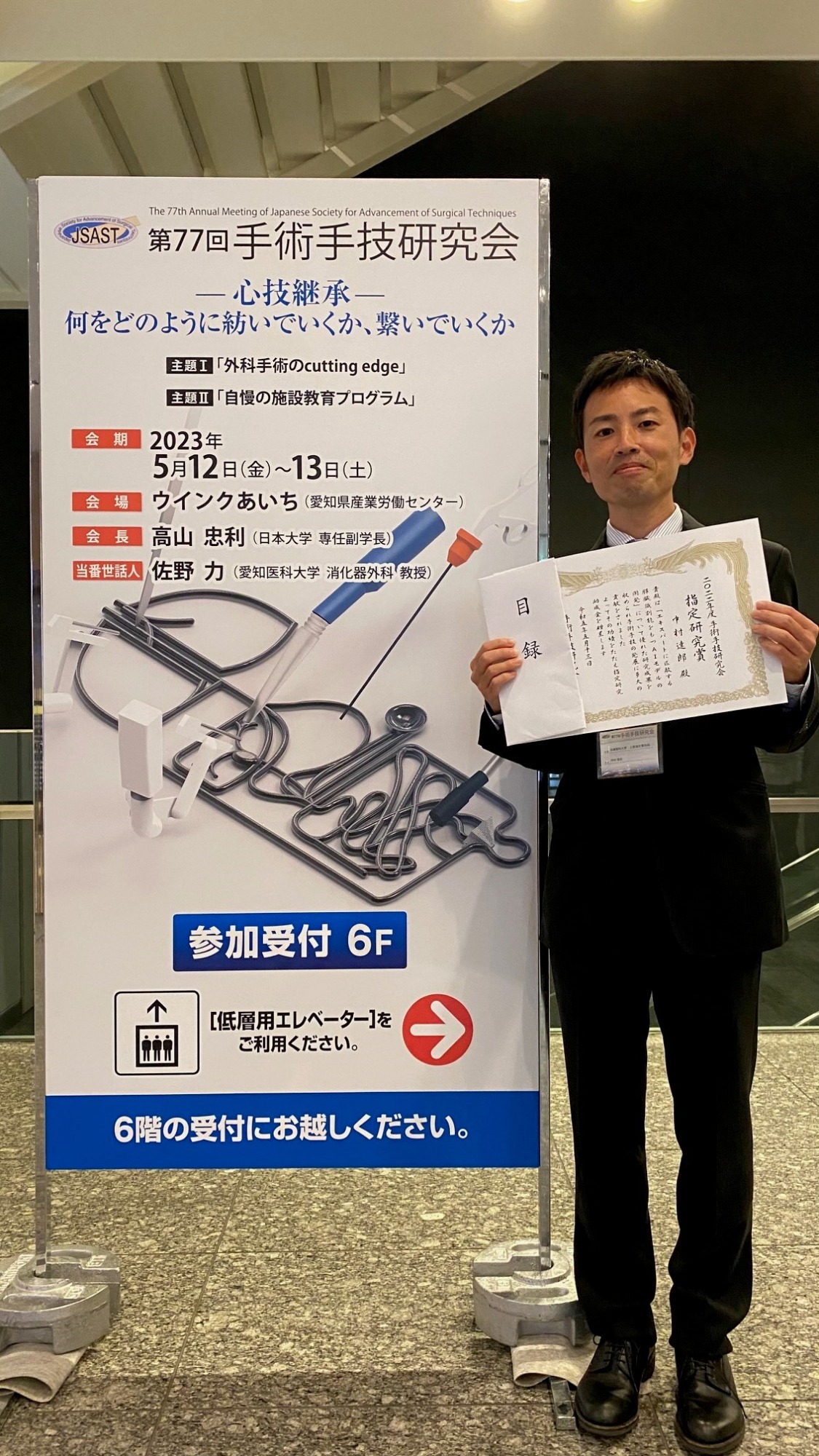Awards
Received the "Designated Research Award" at the 31st Surgical Technique Research Society (Assistant Professor Nakamura Tatsuro, Department of Digestive Surgery)
On May 13, 2023, at the 31st Surgical Technique Research Meeting, Assistant Professor Tatsuro Nakamura of the Department of Department of Gastroenterological Surgery Division of Upper Gastrointestinal Surgery received the Designated Research Award.
Please see below for details of the winning research.

■Awarding organization■ Surgical Technique Research Society
■Award-winning paper■ Development of an AI model with pancreas identification ability comparable to that of experts
Overview
Pancreatic leakage is a serious complication in gastric cancer surgery, and one of the causes is "misidentification of the pancreas" during surgery. The pancreas has small protrusions and fatty deposits, and the goal is to prevent surgeons from "misidentifying the pancreas" and reduce the occurrence of pancreatic leakage by accurately coloring these using AI image recognition technology. At this stage, AI's ability to identify the pancreas is approaching a level comparable to that of expert surgeons, and it is expected that the use of AI in real time at the surgical site in the future will improve the surgical team's recognition of the pancreas.
Training Background
Pancreatic leakage is one of the serious complications of gastric cancer surgery, but its incidence has decreased due to advances in surgical concepts and equipment. However, because there are individual differences in the shape of the pancreas and the degree of fatty tissue formation, the surgeon and assistant must carefully check the fat and pancreas to be dissected during surgery.
Against this background, a joint group consisting of Hyogo Medical University Medicine and Anaut Inc. is working on the development of a pancreas recognition algorithm using AI technology that is comparable to that of experts, in order to solve the problem of pancreas recognition capabilities differing greatly between surgical teams.
Research Methods and Results
[Research Methods]
A pancreas recognition model was constructed from training data (62 cases, 1158 still images) extracted from videos of robot-assisted gastric cancer surgery. A ground truth was created using untrained test data (9 cases, 80 still images) and quantitative evaluation (IoU/Dice coefficient) was performed. In addition, a qualitative evaluation was performed by 10 surgeons using the test data. The sensitivity was evaluated on a 5-point scale (5 points: 90% or more, 4 points: 80-89%, 3 points: 70-79%, 2 points: 60-69%, 1 point: 50% or less) to assess "the extent to which the AI inferred image recognizes the pancreas." We also verified "the extent to which the AI inferred image can be distinguished from the ground truth created by humans."
[Results]
In quantitative evaluation, the algorithm we created had a relatively good recognition accuracy of IoU=0.46 and Dice=0.61. Qualitative evaluation by surgeons also achieved a relatively high average sensitivity of 4.18. The AI-inferred images were distinguished in 62% of cases, and in approximately 40% of images, human annotations were mistakenly judged to be AI-inferred images.
Future challenges
In the future, it will be necessary to improve the AI's accuracy in recognizing bleeding or fatty pancreases, as well as to verify whether surgery time can be shortened and the incidence of pancreatic juice leakage can be reduced when AI becomes available in real time.
Source of research funds etc.
Grant-in-Aid for Scientific Research (Basic Research B) "Developmental research toward practical application of a decision support system for surgeons using computer vision"